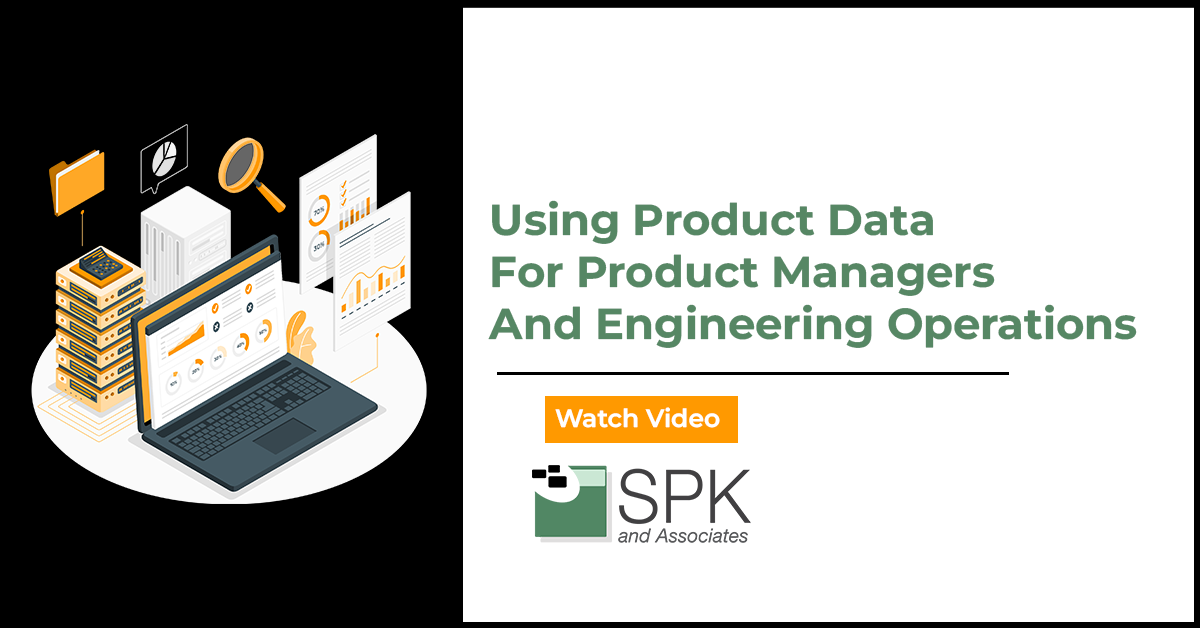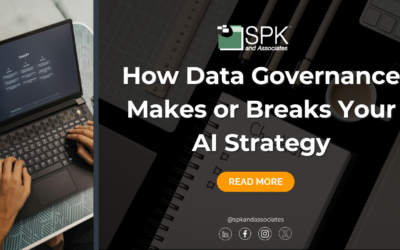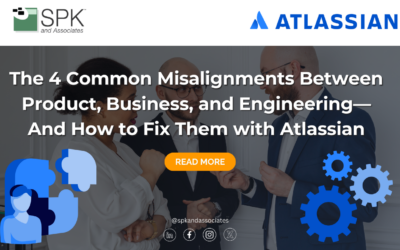Overview
Here is the VLOG transcript for Chris McHale, CEO of SPK, and District Manager, Ed Chung, discussing the importance of data, dashboards, PowerBI and visualization tools for Product Managers And Engineering Operations.
Your Hosts
Chris McHale – Co-founder and CEO of SPK and Associates
Ed Chung – District Manager, Applications Engineering Group of SPK and Associates
Chris: Tell us what you do, Ed
Ed: I work with directly with engineering groups and managers and product development teams in order to ensure that, we always say we want to help them bring products to market faster. But what I, you know, also do on the flip side is I remove things that slow them down.
The Holistic Data Challenge
Chris: I’ll add on to what you just said you and your team have huge expertise in the applications and systems tools that engineers use to develop product and service and bring it to market. So what we were starting to talk about earlier that I thought would be a great topic for today is the whole area of data in product and service development companies. And so what we were starting to talk about before we were recording this but let’s go back and rehash it is the whole idea of is paint a current state of the world right now from what I see as a CEO talking to other CEOs. And then what the ultimate desired outcome would be if one could wave a magic wand. And we did do a bunch of this work for ourselves so we can actually see from the experience. So what I see in terms of the lay of the land out there with data is that lots of smaller and mid-market companies have spent a lot of time and effort really good time and effort making sure that they have systems in place to help manage their work. So you may have if you’re in a product company you may have a product data management system with design authoring tool. You may have another set of systems that manage your software development. You may have another set of systems that manage all your financial data. If you make product you’re going to have an ERP or something like that that’s managing that aspect of it. If you are on the service side you’ll have some kind of system that manages your service workers and the work that they’re doing workflow there. You’ll have a financial set of systems and so on. CEOs and their their leadership has spent a bunch of time doing that and have done it pretty well I think. When I talk to them, what I see is I’ve got all of these different systems and they’re doing all this really great work for my people in these various areas and departments. They do decent reporting out of each of those systems but I don’t have any holistic view or dashboard of what’s going on in my company. I can’t relate these different silos and the data from these different silos in a really quick and efficient way. And when you can’t do that quickly and efficiently, you end up not having those insights. What do you see Ed?
The Traditional Way of Solving The Data Challenge
Ed: Yeah it is slightly different words but it’s the same thing right. I think traditionally, you hired a person. You said, “hey what’s your job? Your full-time job is every single month grab these 18 Excel files copy and paste them here so I can make a pie graph.” You have all these disparate systems and either you’re spending those managers time. Thus Managers are spending too much time pulling out all the information or their information is delayed because they’ve got this thing… Johnny updates the reports once every month so therefore I’m one month behind in my in my visibility.” So I definitely see that
Chris: Just to add on to that last thing you said there. We talk about leading indicators and lagging indicators of information. So the lagging is usually where people go first like. “What’s my plot like? What’s my gross margin look like? What’s my inventory? What’s all my product related data look like last month?” But most importantly, leading indicators are the ones that really allow you to plan and actually take action and make decisions that can affect your company better.
Ed: I think one of the challenges they’re also having now is that this isn’t new. This idea of like collecting data (is not new). So they ask an engineer “what kind of data can our PDM/PLM system generate?” Time of this, every single action, every single touch. They recorded all this data because the engineer thought I want to collect it. “I collected all this data for you and now my CEO has all this data,” but it’s not meaningful because it’s not (understandable). There may be too much data. We talk internally about business intelligence. It’s not just business knowledge. It’s not just data. It’s being able to digest that data into something actionable.
A Case Study of Data Engineering and Visualization
Chris: In our own case, we’re a services company, not as much of a product company but we do a product but our product is our people’s intelligence and their time really. So we ourselves spent the last year or year and a half doing this exact same exercise in our own company. We said “I had reports. I had dashboards of this and reports of that and graphs of this and graphs of that.” And they were really good and they gave me good information but it was as if in order to get the right insights out of that data, I had to go through a bunch of mental push-ups to correlate things in my head or ask somebody “can you do this for me or do that for me?” So then I would get to some information that was helpful where these different disparate data sources were correlated but 1.) it took too much time so it wasn’t immediate. It wasn’t real time. The bigger issue, which I really didn’t see at first, was 2.) that my people that were helping me run this company didn’t have access to that data in a real-time fashion. And because they didn’t see it and they didn’t really know what was going on they couldn’t draw the right insights and make the right decisions. We used Microsoft Power BI to do that. You could use tableau or something else too. Once we had all of this pulled together (doing the data engineering), we were creating and making sure that the data got to where it needed to go and then using Power BI to create very simple straightforward visuals on what was going on. Then we share those right with the people in the company. And then all work off that one dashboard and say “Ok, what’s going on here? Or what’s going on there?” Then you’re all on the same page so to speak. And it sounds so simple when I say it and yet I don’t see this being done. I mean even we were really doing it for a while and now we’re doing it I’m thrilled. But what do you think about that because you’re on the other side. Where you didn’t have it either and then I started to do it and then share it with you. What was your experience with that?
Ed: I like to think of this as two separate problems. I split it in half and one half is collecting data. I think that is a large but easy problem. Hypothetically I can hire Johnny to collect data in Excel, write it in a notebook and then type it in another Excel. It’s a big problem but collecting the data is something that we can do and it’s super important but I would like it I think the big change here was in the past in the past one and a half years. The flip side of that is the is the asking the right questions. Where we ask the right questions of…”what is our EBITDA? What is our cost of goods sold?” We use different terms and when you ask those questions and you get to one of the things you just said was not everyone knows the answers to those things because my as a CEO what is the thing that’s slowing us down what is the what is the delay I think in the company in places I work with. “What is the thing that’s causing my delay in product release?” That question right there. Ask the question first. Then ask the question and even generate that data manually. Hey what caused the delay in this one thing? It took me 45 days to research it but I found this thing that’s not useful but now I know what question was asked. I know how to answer that question 45 days ago.” I bet I can put in some Power BI graphs and get you that every one day. Now you see the big difference.
Chris: Right. I was just talking to somebody who’s a CEO of a (financial) services company. She was saying kind of the same thing. She was saying “we have all this data. We have Excel spreadsheets. And we have a system over here that collects data and we have a CRM that collects data. And we use QuickBooks or whatever the various things are.” It kind of doesn’t matter but she had this issue and she was drowning in it. Not being able to correlate this data or understand what insights to pull from it because there was too much. It was in these different places. And then the minute you get into Excel spreadsheets too, which times you can’t avoid, but the minute you get into those there’s a delay or that there’s always a question about accuracy of data and so on so forth. But what I was getting at here is that she explains this whole situation and then she said “well how do we start even?” And I said “well you start by asking what questions do you need answers to? What are the most burning questions you have right now? Like today. If I knew the answer to x I would feel better. And I would actually be able to make a decision on something else but my gut, which is what you end up doing. That kind of took this whole effort down to simple steps. That’s the other thing. I think people get overwhelmed by “oh, what do I have to do here?” When really just like what you said. “What question you want to answer today?” Just work on that question. Pull that in and figure out where the data is pulled it into something that’s visual. Then go on to the next question. And then go on to the next one. And keep pulling them into the same place that’s important. Some of this is kind of psychological isn’t it? I was struck by that.
Ed: Yes, I absolutely agree it’s like… If you see it on the table then you use it. The kitchen aid mixer is on the shelf. I don’t need a mixer but if it’s on the table somehow it gets used every day. It’s the same thing. If you have to go get your data everywhere…
Chris: You won’t.
Ed: I love using dashboards all the time, a separate dashboard if necessary but one dashboard would be great.
Chris: Yes, and sometimes ones it gets too busy. But here’s the key thing. Here’s a psychological part. If it’s all in the same area place where I go to this website or I go to this page and at least it’s all available on that page, that’s a big step forward. But then even better I may say “oh look at this thing over here and this thing over here that may be correlated. Those would be interesting of course. Then you can get into you can start to use things like machine learning to look for those correlations for you. If you have enough data and it’s complicated enough, those are our tools we use. Let’s let’s at least gather. It’s in a data lake and then you can apply usually cloud is easiest. AWS or Azure but you can apply machine learning cloud tools to start to look for those great pieces of informational correlations for you.
Ed: What happened to your friend who is drowning in all the data?
Chris: She’s engaging with us at this point just to see there’s ways we can help her. And we’re going to start with that one burning question see if we can answer the one burning question and then move on from there, which I think was a relief to her because I think she thought this was going to be an overwhelming project but like all such things you can take it a bite at a time. And get somewhere with it.







